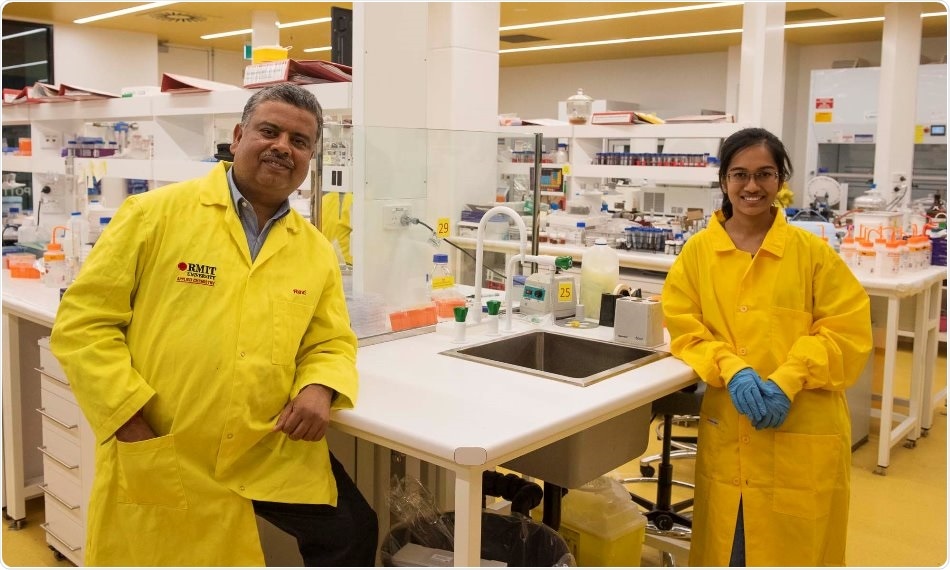In a promising advance for affordable, personalized medicine, researchers have used metal-organic frameworks to successfully deliver the genetic snipping tool CRISPR/Cas9 into human cancer cells.

L-R: Associate Professor Ravi Shukla and PhD researcher Arpita Poddar in their lab at RMIT University.
Researchers used metal-organic frameworks (MOFs) enhanced with a green tea phytochemical coating to target human prostate cancer cells for the first time.
The new method for deploying the genetic snipping tool directly into target cells is a big step towards more effective, safer and cheaper gene therapy with treatment potential for multiple genetic disorders.
Lead researcher, Associate Professor Ravi Shukla, said MOFs, which are versatile and biocompatible nanomaterials, were a promising alternative to existing viral methods for delivering the gene editing tool CRISPR/Cas9.
MOFs have the capacity to carry larger genetic loads and as a non-viral option, have the added benefit of being a safer prospect for patients than viral alternatives."
Ravi Shukla, Associate Professor, Lead Researcher
Awarded the 2020 Nobel Prize in Chemistry, CRISPR/Cas9, is widely acknowledged as a breakthrough in genetic editing for its ability to remove and replace defective DNA, however the biggest challenge remains effectively delivering it to cells.
There are currently just 13 approved methods in trial globally and all rely on viral therapies, an approach which is both extremely costly and has associated health risks.
RMIT has partnered with the CSIRO who have previously developed a technology to carry and protect biomolecules with MOFs.
CSIRO Research Team Leader, Dr Cara Doherty, said the CSIRO had also developed technologies to manufacture industrial scale quantities of various MOFs, with the potential to significantly reduce the cost of bringing them to market.
We're excited to find a novel way in which these materials can address complex biological issues, including targeting specific medicinal purposes like gene therapy."
Dr Cara Doherty, CSIRO Research Team Leader
Cells are not designed to naturally take up foreign genes or DNA material, and the risks associated with introducing a virus into the body have slowed the progress of research into viral approaches to gene therapy.
To further improve the ability of the MOF to enter the host cell, it was coated with a phytochemical found in green tea, called epigallocatechin-gallate (EGCG), known for its antioxidant and anticancer properties.
Co-author Arpita Poddar said the EGCG worked by binding to the surface of the MOF, assisting it to enter the host cell.
"We found an increase in cellular uptake of more than 23% for EGCG coated MOFs compared to uncoated ones," she said.
The latest findings build on previous work by the team who developed a proof of concept for the delivery model late last year.
Next, they will work to further test this technology for its application in targeting several other disease-causing genes.
Source:
Journal reference:
Poddar, A., et al. (2020) ZIF-C for targeted RNA interference and CRISPR/Cas9 based gene editing in prostate cancer. Chemical Communications. doi.org/10.1039/D0CC06241C.